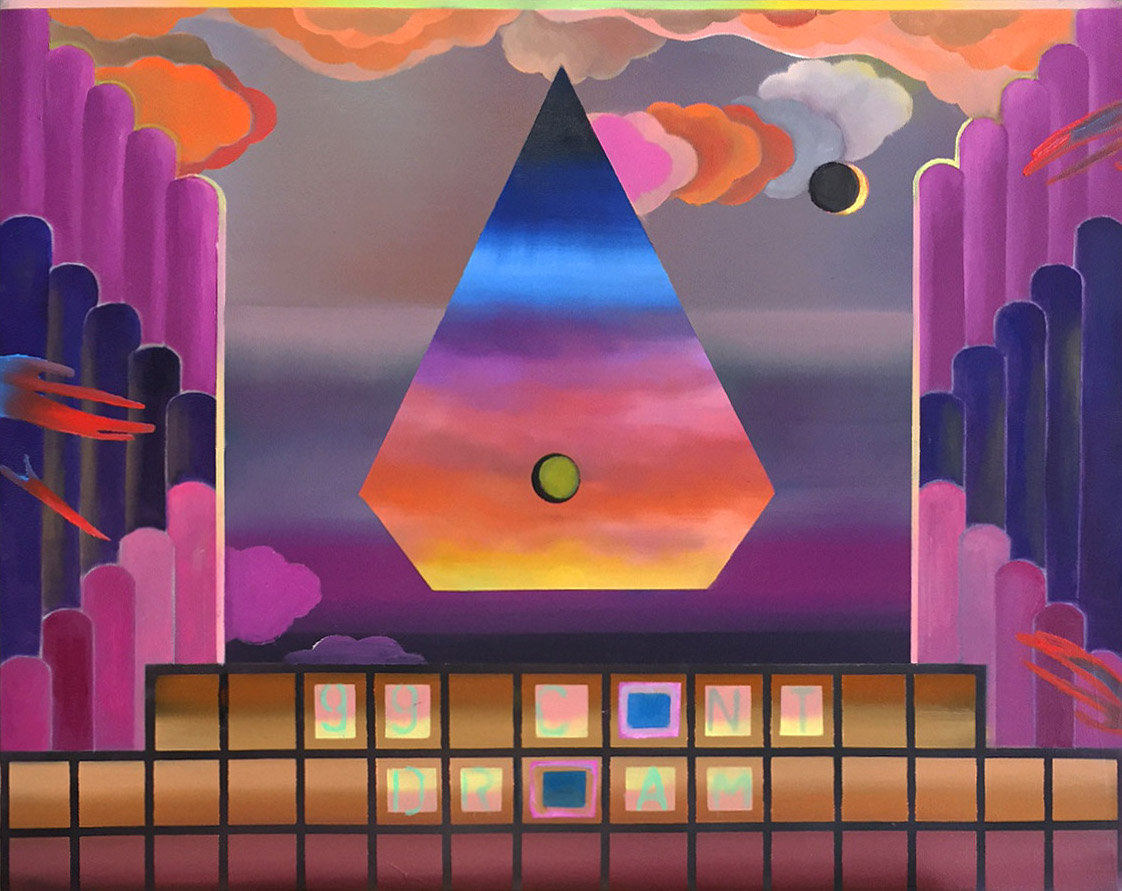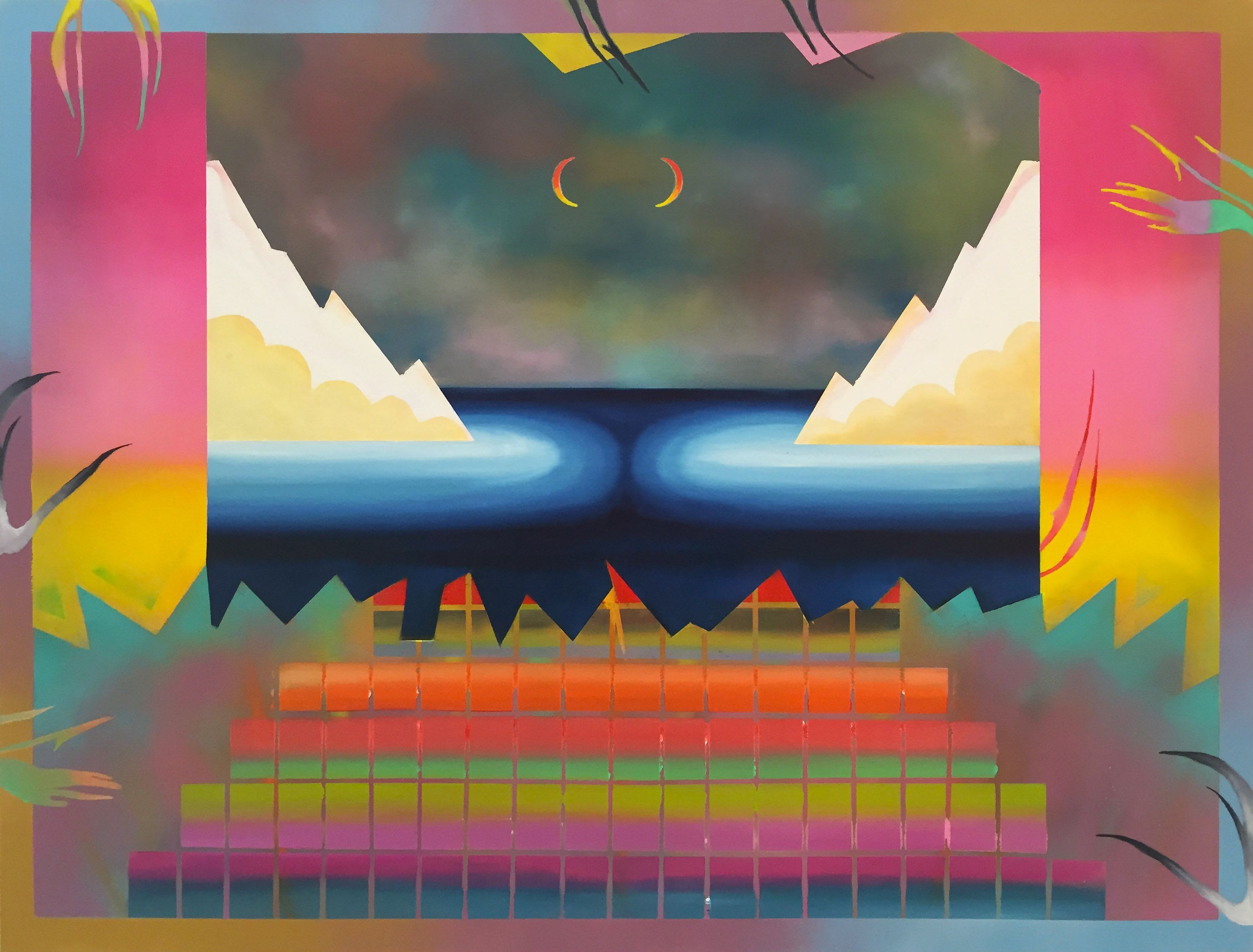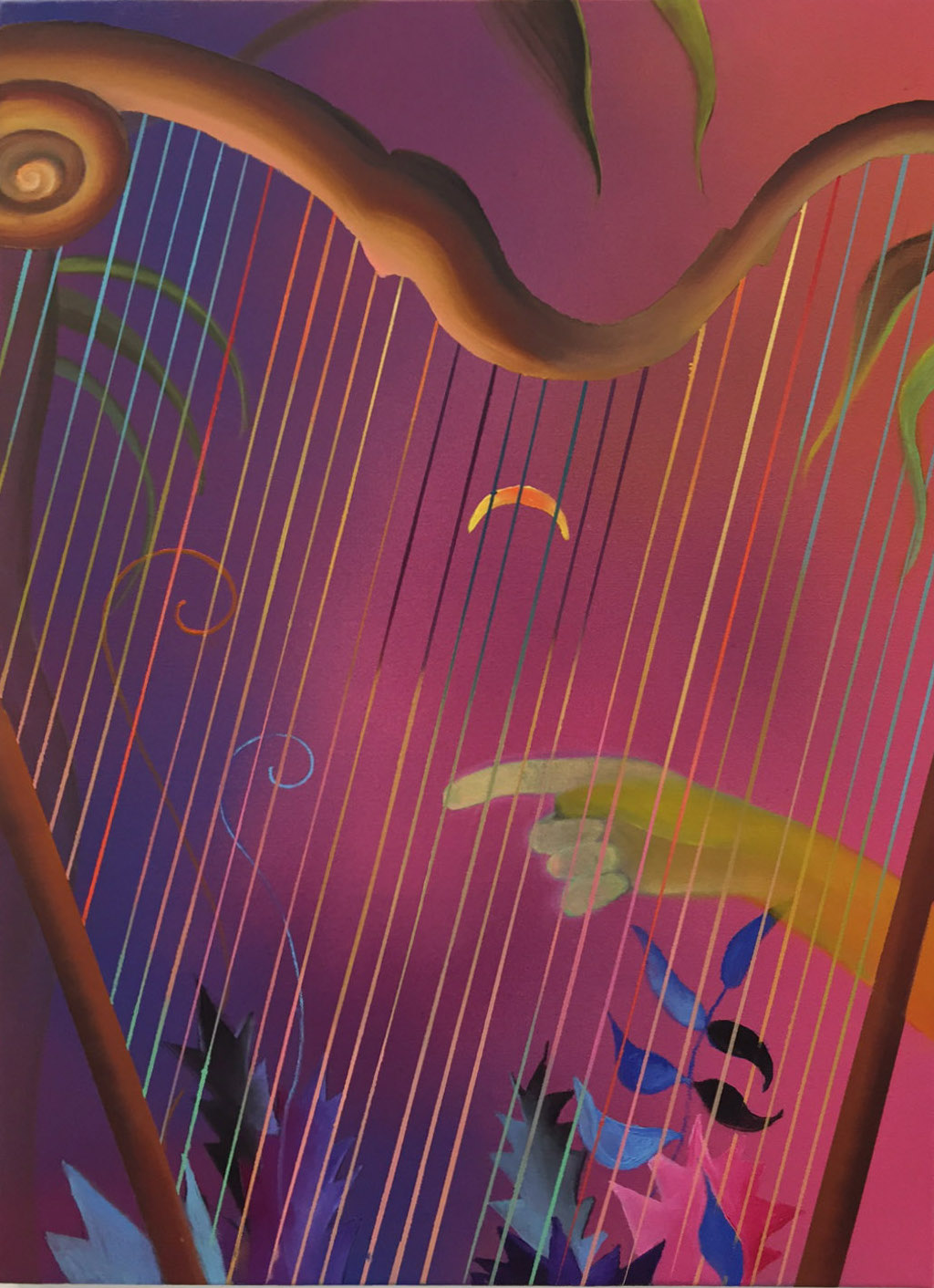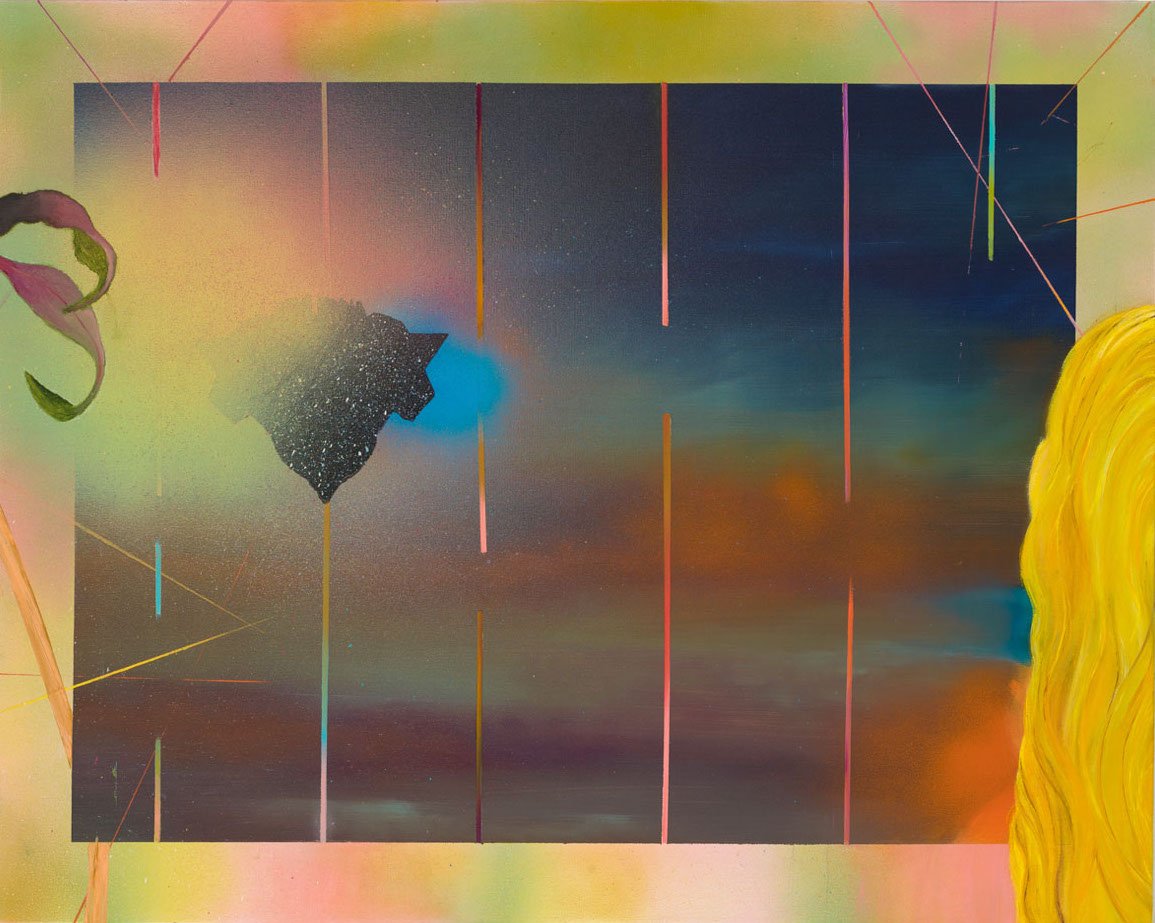
Sharona Eliassaf is an artist attuned to the possibility of alternate worlds. Her hyper-saturated paintings depict sunsets over strange cityscapes, ones in which the familiar details of our own reality are filtered through an altogether different lens. Unknown plants curl and climb across the urban sprawl like a verdant garden no longer kept at bay.
The sensation of something lingering and lurking just out of sight is compounded by mysterious hands and legs that appear on the cropped edges of the canvas, glimpses of life in otherwise unpeopled landscapes. Eliassaf is interested in psychic phenomena and hidden meanings, placing mysterious symbols and codes in paintings that take on an almost spiritual resonance.

Architecture and the city are important motifs in your work, while elements from the natural world such as flowers and ferns are also present. How do you navigate the contrasts between the two, and what appeals to you about their combination?
Structures have certain rules which I like to play around with in my work. Sort of like putting together my own puzzle , building my own personal rules and restructuring them into my painting. Since I was young, I liked to watch a lot of television, specifically music clips, game and night shows. I realized that in a lot of these shows there is a picture of an eerie, fantastical or metaphysical landscape incorporated in the stage set that does not necessarily relate to the reality of the viewer watching the show.
Most of my recent paintings are about dual worlds becoming one and turning into a third world. I try to balance the contrasts of these opposite worlds and that is what I find so exciting. I like doing this mostly by putting together different aspects that may not seem to relate to each other into one painting surface, such as architecture and the natural world.

Everything from storefronts to geological formations and goggly eyes can be found in your work. Where do you look for inspiration, and what are the day-to-day references and encounters that you experience in your locale?
I often walk around with a camera and capture moments, light, patterns on buildings and shapes in landscapes that may not seem important at first or may seem ordinary, to some people but which I find intriguing for their design or colours, and sometimes they find a place in a painting. I was always drawn to dual and alternate realities—such as mysterious relationships that form in nature, or the deepest fears that dwell behind everyday life. I think this has a lot to do with my own personal experience. Between living in two places and being part of separate histories and experiencing dual identities and languages in my everyday life.
When I begin a new painting I like to think of it as if I’m watching a performance in a dysfunctional theatrical play. As if producing for a film set, I always think of how to build up moments by choreographing values of light and dark, by creating tensions, and by reconfiguring what looks familiar to appear new or strange. In these “ stage-like spaces” I feel I can manipulate my own sublime by weaving cryptic narratives from the collected experiences of overlapping countries, languages, identities, markets, anxieties and technologies experienced in our everyday life. Like in a dream, nothing is excluded as subject matter: TV game shows, storefront signs, breaking news, overheard conversations, cosmic phenomena and digital images all swirl and synthesize in a single composition.

There is often a pleasing symmetry to be found in your work, suggestive of devotional symbols or rituals. What informs these compositions, and what is your connection to the spiritual?
I am fascinated by stories and images related to metaphysics, psychic phenomena, hidden worlds and the discovery of hidden meanings. I feel that so many mysterious symbols and codes exist in our world but sometimes our minds cannot comprehend their existence, and therefore some people either exclude or ignore these signs. Images related to the history of ritual and symbolism have a very big impact on me, and in my paintings I like to emphasize their presence from time to time. Sometimes I use them as a visual personal code so I can secretly communicate with certain people or situations in my paintings which I can’t do elsewhere in real life.

Occasionally, arms, legs or other glimpses of women can be spotted in your paintings, but these are never the main focus of the composition. Who are these women, and why do you choose to reveal them in this way?
Its true that if there are figures in the paintings, most of the time the viewer will only see a glimpse of them and most of the times she will be a woman. I guess the main reason I mainly paint women is because I can best relate to women as one myself. But this really depends on the specific painting and its subject matter. For example, a while back I made a series of smaller paintings which I painted news broadcasters and the landscape behind them. I see myself more of a landscape painter than a figurative painter, and most of the time these body parts are there just to mark a presence of a person in the landscape and to signify something happening in the place. The painting is never really about a person but more about the place and its surreal atmosphere.

How important is fantasy and the surreal in your work?
I feel that in every painting I make I am continually trying to define a thin line between abstraction and representation and I think that may be a reason why the result looks surreal in the end. In the process of my painting all I am really trying to do is depict the crazy, sometimes beautiful, unbalanced, apocalyptic, mysterious and unpredictable world we live in through my personal lens.





